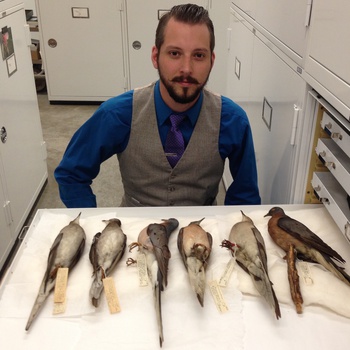Charting the High Frontier of Space
Ed Lu

March 19, 02019
Throughout human history, mapping has been the key to the opening of new frontiers. Mapping of previously uncharted regions has enabled economic expansion and the development of new markets, science, and defense. For similar reasons, mapping the locations and trajectories of the millions of uncharted asteroids in our solar system is the key to opening the space frontier. This four-dimensional space map will be crucial to the economic development of space, the protection of the Earth from asteroid impacts, and to understanding the origin and evolution of Earth. Join Dr. Ed Lu, former NASA astronaut, co-founder of B612 Foundation and the current Executive Director of the Asteroid Institute as he makes the case for the need to chart the high frontier of space and learn how you can help.
Dr. Ed Lu, Executive Director of the Asteroid Institute, served as a NASA Astronaut for twelve years. He flew aboard the Space Shuttle twice, flew on the Russian Soyuz to the International Space Station and has logged over 206 days in space. Dr. Lu has been an active research scientist working in the fields of solar physics, astrophysics, plasma physics, cosmology, and planetary science. He held positions at the High Altitude Observatory, the Joint Institute for Laboratory Astrophysics, and the Institute for Astronomy. At Google, he led the Advanced Projects group which built imaging and data gathering systems for Google Earth and Maps, Google StreetView, and Google Books. He is a co-founder of B612 Foundation, the only organization in the world dedicated to finding, mapping and deflecting asteroids.
Upcoming Talks
Videos

Johanna Hoffman
Speculative Futures: Design Approaches to Foster Resilience and Co-create the Cities We Need
October 12, 02022

Creon Levit
Space Debris and The Kessler Syndrome: A Possible Future Trapped on Earth
April 26, 02022

Brittany Cox
Horological Heritage: Generating bird song, magic, and music through mechanism
August 20, 02019

Elizabeth Lonsdorf
Growing Up Ape: The Long-term Science of Studying Our Closest Living Relatives
April 30, 02019

James Holland Jones
The Science of Climate Fiction: Can Stories Lead to Social Action?
January 29, 02019

Kevin Kelly, Stewart Brand, Alexander Rose
Siberia: A Journey to the Mammoth Steppe
January 22, 02019

Caroline Winterer
The Art and Science of Deep Time:
Conceiving the Inconceivable in the 19th Century
September 4, 02018

Esther Dyson
The Short Now: What Addiction, Day Trading, and Most of Society’s Ills Have in Common
July 17, 02018

Hannu Rajaniemi
The Spirit Singularity: Science and the Afterlife at the Turn of the 20th Century
July 10, 02018

Shahzeen Attari
Facts, Feelings and Stories: How to Motivate Action on Climate Change
June 26, 02018

Renée DiResta
Disinformation Technology: How Online Propaganda Campaigns Are Influencing Us
April 10, 02018

Scott Kildall
Art Thinking + Technology: A Personal Journey of Expanding Space and Time
August 15, 02017

Miles Traer
The Geological Reveal: How the Rock Record Shows Our Relationship to the Natural World
June 27, 02017

Andrew Lakoff
How We Became “Unprepared”:
Imagining Catastrophe from the Cold War to Bird Flu
May 30, 02017

Jennifer Petersen
Why Freedom of Speech Is More Than Speech:
Expressions in Media and Code
April 18, 02017

Tara Behrend
The Psychology of Surveillance:
How Being Watched Changes Our Behavior
February 28, 02017

Ben Novak
The Next Flight of the Passenger Pigeon: Engineering Nature's Engineers
September 27, 02016









































































